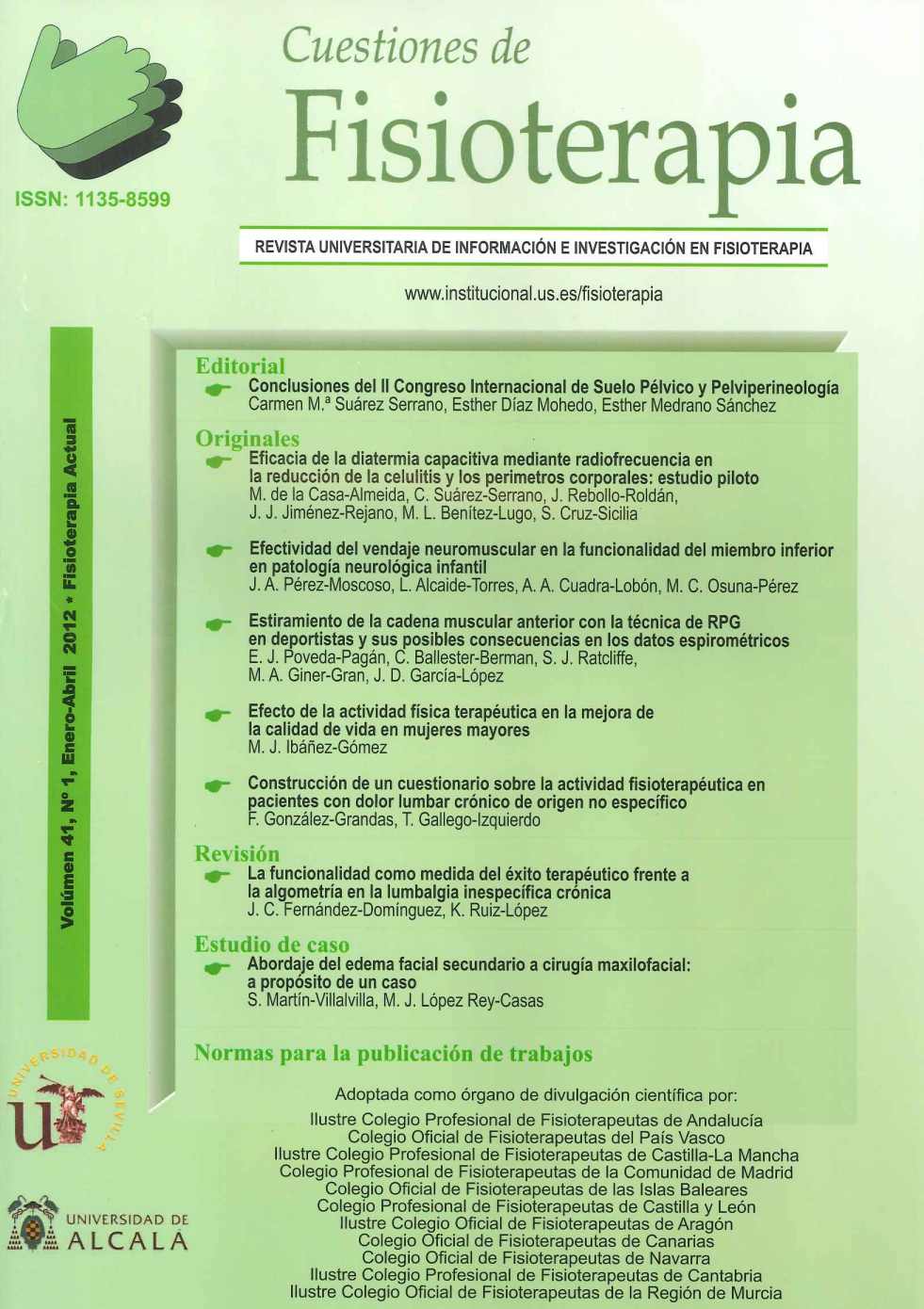Articles
Year 2019, Volume 48, Issue 3
Postural stability and baropodometric parameters in non-specific chronic neck pain: a cross-sectional study
Abstract
Introduction: there are central and reflexive connections between cervical receptors and visual and vestibular systems This fact points out the importance of the cervical region in postural control. The purpose of this study is to verify the relationship between non-specific chronic cervicalgia and possible postural stability dysfunctions measured with baropodometric values. Material and method: descriptive, cross-sectional, cross-association study. Eighty subjects were evaluated (44 women and 36 men). The mean age was 39 ± 14 years (19-65 years). Pain intensity was measured with the Visual Analogue Scale (VAS) and disability with the Neck Disability Index (NDI). The postural control was measured on a FreeMed® baropodometrical platform. Results: the results of this study indicate that subjects with cervicalgia present a postural imbalance when compared with healthy subjects, since there is a significant variation in the difference of the total surface of the left foot versus the right one (healthy subjects mean: -2.4 cm2 ± 15.0, Subjects with cervicalgia mean: 5.3 cm2 ± 15.0, p = 0.014, d = 0.57), also in the difference in the surface of the left forefoot versus the right (healthy subjects mean: -1.1 cm2 ± 10.6, Subjects with cervicalgia media: 3.3 cm2 ± 8.1, p = 0.043, d = 0.47) and in the difference in the surface of the left rearfoot versus right (healthy subjects mean: -1.1 cm2 ± 6.4, Subjects with average cervicalgia: 2.2 cm2 ± 6.1, p = 0.023, d = 0.53) in favor of the left side with respect to the right side. Conclusions: subjects with chronic neck pain present an altered balance control, since the baropodometric values indicate a greater support surface in the left foot (total, forefoot and hindfoot) compared with the right one.
Keywords: cervicalgia, postural stability, baropodometry.

